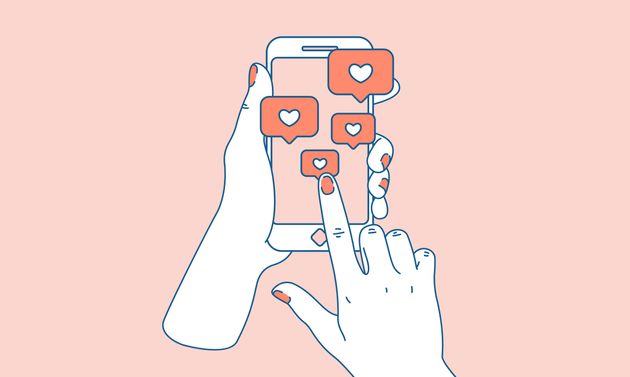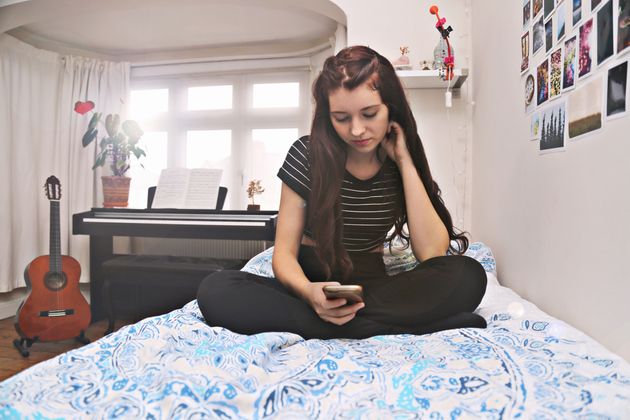
Speak to any parent of a teen and they’ll most likely tell you that social media is a big part of their child’s life.
More than a third of teenagers spend at least three hours a day on social media, with a fifth using it for at least five hours, a 2019 study found. And now, a new study of 10,000 teens suggests very frequent social media use among girls may be harming their mental health – but not because of social media itself.
The issue is that frequent social media use can a) increase exposure to bullying, b) contribute to reduced sleep, and c) contribute to a lack of physical exercise, researchers said. They noted that the impact on boys’ mental health appears to be due to other mechanisms not revealed by their study.
Professor Russell Viner from the UCL Great Ormond Street Institute of Child Health, who led the research, said the results suggest “social media itself doesn’t cause harm, but that frequent use may disrupt activities that have a positive impact on mental health”.
[Read More: Even Teens Think They’re Using Social Media ‘Too Much’ – Here’s Why That’s A Good Thing]

For the study, published in The Lancet Child & Adolescent Health journal, scientists analysed data from three sets of interviews with teenagers from nearly 1,000 schools across England, as they progressed from Year 9 in 2013 (13 to 14 year-olds) to Year 11 in 2015 (15 to 16 year-olds).
At three different points in time, young people reported the frequency they accessed or checked social media. “Very frequent” social media use was defined as using social networks or apps three or more times daily.
In the second year of the study, participants also completed the General Health Questionnaire (GHQ), where a high score indicates psychological distress. They were asked about their experiences of cyberbullying, sleep and physical activity. And, in the final year, they were surveyed about their life satisfaction, happiness and anxiety.
When the authors found associations between the teenagers’ social media use and psychological distress or wellbeing, they assessed the degree to which this could be attributed to cyberbullying, sleep and physical activity.
[Read More: What’s The Difference Between Mental Health And Mental Illness?]
In 2013, of 13,000 children interviewed, 43% of boys and 51% of girls used social media multiple times a day. By 2014, this had increased to 51% and 68% respectively. In 2015, 69% of boys and 75% of girls used social media multiple times a day.
In both sexes, very frequent social media use was associated with greater psychological distress. This was more prevalent in girls – in 2014, 28% of girls who frequently used social media reported psychological distress on the GHQ, compared with 20% of those using it weekly or less.
Girls who frequently used social media use across 2013 and 2014 reported lower life satisfaction and greater anxiety in 2015. And almost all of the effects of social media use on girls’ wellbeing in 2015 were down to cyberbullying, reduced sleep and reduced physical activity.
In contrast, those three factors appeared to explain only 12% of the impact of very frequent social media use on psychological distress in boys. This, researchers said, suggests there are other mechanisms behind the effects of social media on boys’ mental health.
Previous studies have suggested that prior mental health problems are associated with greater social media use, and the authors note it’s possible this was the case in the first year of the current study. However, in the second and third years, their findings “strongly suggest” causal links between social media use and mental health and wellbeing.
Girls who frequently used social media use across 2013 and 2014 reported lower life satisfaction and happiness and greater anxiety in 2015.
Dr Ann DeSmet from Ghent University, Belgium, said the findings are important for two reasons. First, social media use among youngsters need not be as negative as often assumed. “If the displacement of healthy lifestyles and cyberbullying can be attenuated, the positive effects of social media use, such as encouraging social interactions, can be more endorsed,” he said.
“Second, the joint associations of several lifestyles with mental health indicate the importance of multi-behavioural, whole-school programmes to promote mental health in youth.”
Tom Madders, campaigns director at YoungMinds, said while there are positives to social media, it can also intensify some of the hardest parts of growing up. “We often hear from young people about the devastating effects of online bullying, and about how easy it is to find distressing content,” he said. “As this report suggests, frequent social media use can also affect sleep, which can have a knock-on effect on mental health.”
Madders believes schools have a “crucial role” to play in promoting digital resilience, adding: “As the new Relationship and Sex Education curriculum comes into force, it’s vital that every child learns how to use social media in a way that’s positive for their mental health.”
From September 2020, all schools in England will offer compulsory lessons on navigating relationships, sex and health – and Jonathan Baggaley, CEO of the PSHE Association, said teaching kids to have a balanced relationship with social media will form part of this.
Dr DeSmet concluded: “This paper demonstrates sleep, cyberbullying and physical activity may be important lifestyles to target in protecting and improving youth mental health.”


